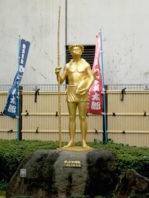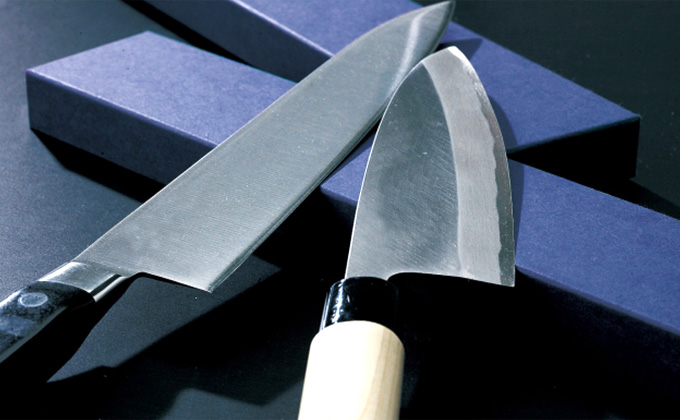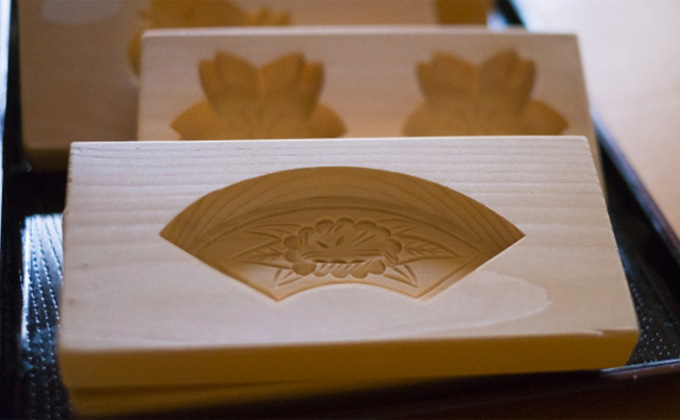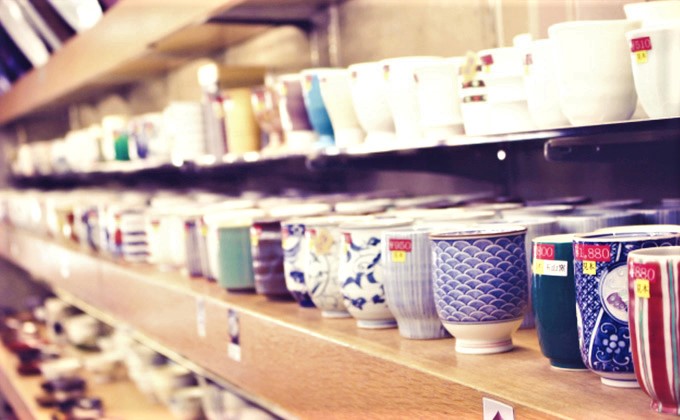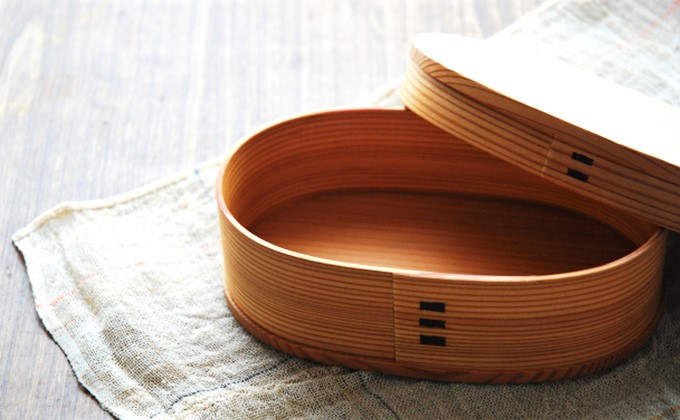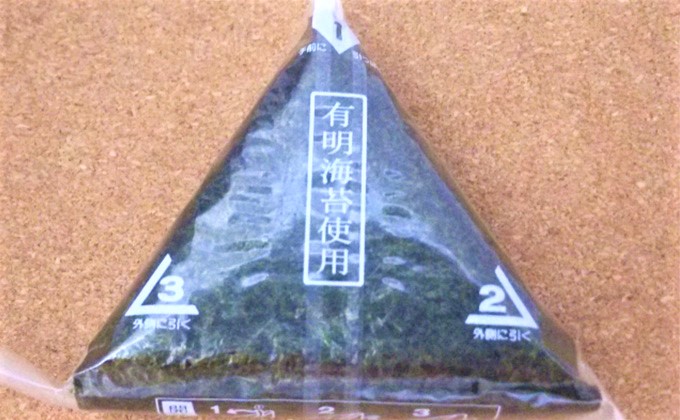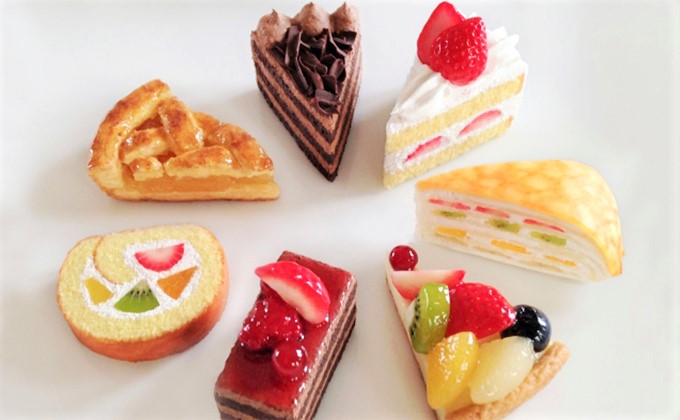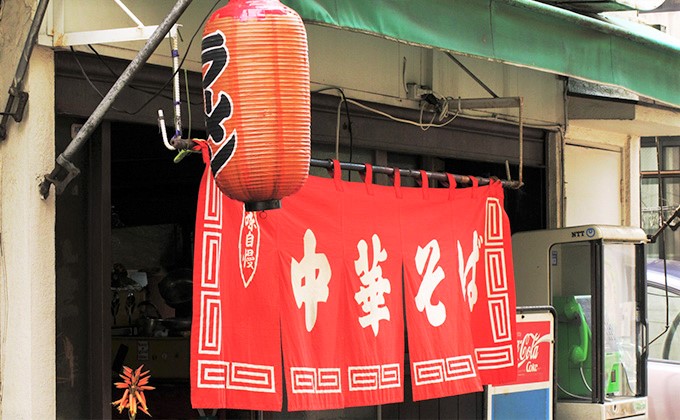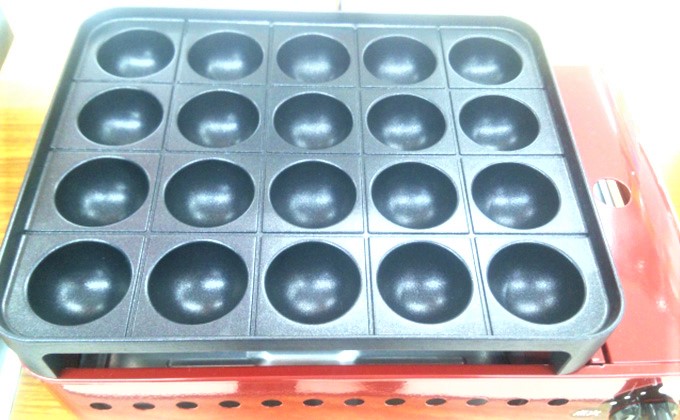TRG Info and Advice
Let’s go to “Kitchen Town,” Kappabashi!
Kappabashi Dougu-gai, or Kitchen Town, is located halfway between Asakusa and Ueno, areas that attract tourists from both inside and outside of Japan. Along the 800-metre long street that stretches from the north to the south, more than 170 shops handling cooking tools, tableware, kitchen equipment, confectionery utensils, and more, stand side by side. Kappabashi Dougu-gai is literally the world’s largest restaurant supply district, devoted to everything needed to set up and run a restaurant, excluding perishables. Their clients are mainly chefs and restaurateurs, but recently, ordinary shoppers have been increasing in number.
Kappabashi Dougu-gai, reputedly, originated when several hardware and second-hand shops opened for business around this area, toward the end of the Meiji Period and at the beginning of the Taisho Period (beginning of the 20th Century). Coinciding with the Great Kanto Earthquake recovery process in 1923, Kappabashi then became populated with shops selling food-related tools centering on confectionery shops. After 1945, the area further developed as a kitchen and restaurant supply shopping district, lined with many different kinds of shops.
Not much is clear about the origin of the area’s name. According to one theory, a long time ago, a merchant started building drainage paths to protect the area from flooding. The task was very difficult and dragged on. Legend tells that kappas (Japanese imaginary water creatures) began to appear night after night and helped with the work. The name of the area is believed to have come from the kappa.
Tokyo Kappabashi Dougu Street Promotion Union supports this theory and has adopted the kappa as their official mascot. In 2005, to commemorate the 90th anniversary of the shopping street, a glittering, golden statue of "Kappa Kawataro" was constructed as a symbol. You can find it in a pocket park near a temple midway down the shopping street.
The over 170 shops at Kappabashi sell anything you can think of when you hear the word “restaurant:” tableware for Japanese/western/Chinese cuisines; ceramics and lacquerware; cooking utensils; packaging; shop curtains (noren); bamboo products; signboards; kitchen equipment; food samples, which are often displayed at the entrance of a restaurant; and much more. One shop sells products with vast ranges of sizes and kinds. For example, over fifty kinds of graters, including ones for wasabi, ginger, and rock salt, over sixty kinds of frying pans, and over 800 kinds of knives! Here in Kappabashi, you can purchase products purpose-designed for professionals at reasonable prices. Some shops even have special corners for discount goods, a great chance to find bargains!
Are you thinking of opening a restaurant? Why not give it an Asian flair with some interesting serving bowls or platters? You could offer before dinner appertifs or post-meal digestifs in tiny Japanese ochokos (sake cups). Or how about matching chopsticks and chopstick rests as souvenirs for friends and family? Japanese rice tastes best when eaten out of a pretty ceramic bowl designed specifically for that purpose. What a great reminder of your visit to Japan, every time you eat rice at home!
Here are just some examples of what is available in Kappabashi.
*Images below are for illustrative purposes only.
1. Knives
Top-quality knives sharpened with care by artisans are very popular. You can even have your name engraved.
▷ KAMATA http://www.kap-kam.com/index_english.html
2-12-6, Matsugaya, Taito-ku, Tokyo, 111-0036
Business hours: 10:00-18:00 (Monday – Saturday), 10:30-17:30 (Sundays and public holidays)
2. Molds
A wide variety of cookie/biscuit cutters, vegetable cutters, Mt. Fuji-shaped pudding molds, wooden molds for Japanese confectionery and rice, etc.
▷Majimaya Kashi Dogu-ten http://majimaya.com
2-5-4, Nishi-Asakusa, Taito-ku, Tokyo, 111-0035
Business hours: Weekdays 9:00 – 17:30, Sundays 10:00 – 17:00
3. Tableware
Reasonably-priced ceramics and lacquerware for restaurants, ship-shaped sashimi plates, Shinkansen (bullet train)-shaped plates (usually used for children's lunch sets in Japan), and more!
▷Takahashi Sohonten http://www.takaso.jp/index_en.html
1-4-7, Nishi-Asakusa, Taito-ku, Tokyo, 111-0035
Business hours: 9:45 – 18:00
Closed on Sundays and national holidays
4. Lunch boxes
Ordinary plastic boxes, stainless steel boxes, magewappa (wood craft container formed into a circle shape) boxes, lacquerware-style boxes often found at Japanese restaurants
▷Sankido http://www.sankido.co.jp/english/index.html
2-13-12, Matsugaya, Taito-ku, Tokyo, 111-0036
Business hours: Weekday 9:00-18:00, Sundays and national holidays 12:00 – 18:00
5. Convenient tools
"Rice ball sheets" that enable you to make convenience-store-style rice balls, "squid clips" that prevent squid from curling up when being grilled
▷Kitchen World Tokyo Direct Import Center http://www.kwtdi.com/en_index.html
SPK Building, 1st Floor, 1-9-12, Matsugaya, Taito-ku, Tokyo
Business hours: 9:30-6:00 (Sundays and national holidays: 10:00 – 6:00)
Open 7 days a week
6. Food samples
Fake foods found at restaurants are pricey, but little items such as key chains, magnets and bookmarks are available at cheaper prices. Some food sample shops offer make-your-own-sample kits and sample making workshops, too.
▷Ganso Shokuhin Sample-ya http://www.ganso-sample.com/en/
3-7-6, Nishi-Asakusa, Taito-ku, Tokyo
Business hours: 10:00 – 17:30
Open 365 days a year (except year-end and New Year’s)
Also available are noren (shop curtains), red lanterns, Japanese-style omelette pans, takoyaki (octopus balls) pans, tawashi scrubbers, Japanese-style paper table mats, Nanbu tekki (cast iron pots), and the list goes on!
It is great fun to pop in to some shops while exploring, but a couple of hours can easily be whiled away if you carefully browse through. Therefore, it is a great idea to get a map once you get to Kappabashi, pick out several shops, and visit them one by one. Maps (in English) are available at participating shops of Tokyo Kappabashi Dougu Street Promotion Union. Just look for stickers of the kappa mascot character and banners. If you want to come back to a certain shop after checking other shops, put a mark on the map so you can find the shop again without getting lost.
Every year for a week, with the 9th of October (Day of Dougu [tools]), as the middle day, Kappabashi Dougu Festival takes place and the area gets thronged with shoppers. You will find sale baskets along the sidewalk and get a variety of products at cheaper prices than usual.
If you are kitted out with good, proper equipment, you feel comfortable and whatever you need to do can be easily done. Kappabashi offers mostly crockery and cooking utensils, but you can use them as you like.
Those who love cooking, have a slight interest in it, or really don’t care for it at all should come visit Kappabashi at least once, just to get a glimpse of Japanese food culture.
Visit the website of Kappabashi Dougu-gai at http://www.kappabashi.or.jp/en/!
Useful Information
*Many shops are closed on Saturdays, Sundays and national holidays because they cater to professionals in the restaurant industry. Most of the shops are open from 9:00 to 17:00 on weekdays. Please note that many shops are closed at year-end, New Year’s, and during obon (a period around the 15th of August).
* Elaborate displays can be easily disturbed by big bags, so utilizing coin lockers (available at most train and subways stations) is recommended. Moreover, it is tiresome to carry your backpack or suitcase around all day!
*Credit cards are not accepted in many shops, and there is no ATM in the neighborhood, so carrying cash is advised.
*Free WiFi is available. You can identify free WiFi spots by white and green stickers. Look for the network “Kappabashi Free Wi-Fi” (up to 60 minutes/session, available four times a day).
How to get to Kappabashi
◆By train and on foot
15-minute walk from Uguisudani Station of JR Yamanote Line or Keihin Tohoku Line
25-minute walk from Asakusabashi Station of JR Sobu Line
5-minute walk from Tawaramachi Station of Tokyo Metro Ginza Line
6-minute walk from Iriya Station of Tokyo Metro Hibiya Line
13-minute walk from Asakusa Station of Toei Subway Asakusa Line
13-minute walk from Asakusa Station of Tobu Isezaki Line
5-minue walk from Asakusa Station of Tsukuba Express
◆ By bus
– Take the bus from Ueno Station bound for Aoto Shako / Minami Senju Station East Exit and get off at the Kikuyabashi bus stop.
– Take the bus from Uguisudani Station bound for Kameido / Asakusa Kotobuki and get off at the Iriya Ni-chome bus stop.







